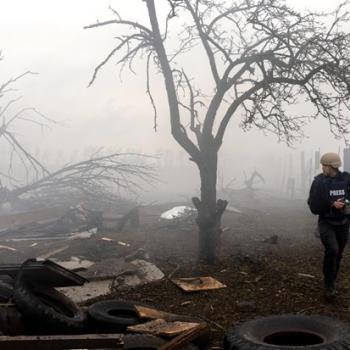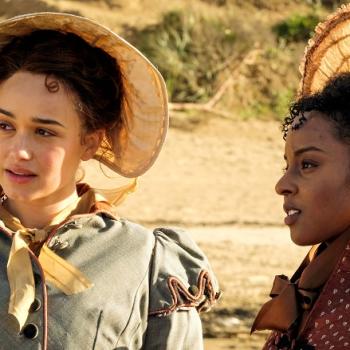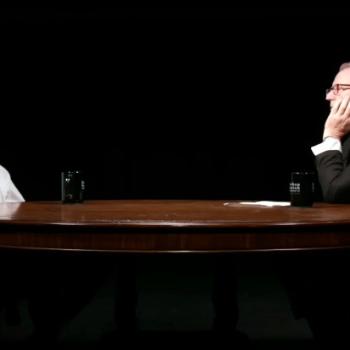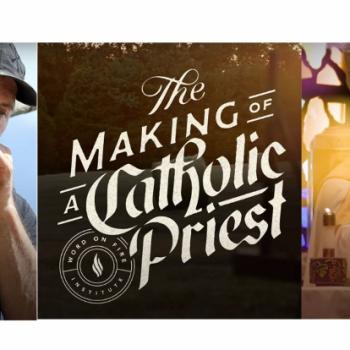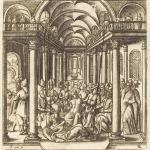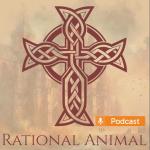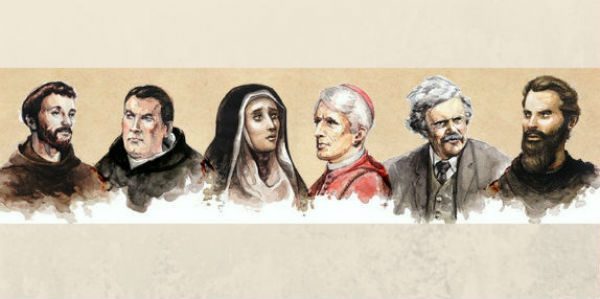 Starting tonight, Sunday, November 13, and continuing through December, PBS stations across the country (check local listings for time and channel in your area — or click here for an air schedule) are airing “Catholicism: The Pivotal Players,” the follow-up to Bishop Robert Barron’s “Catholicism.”
Starting tonight, Sunday, November 13, and continuing through December, PBS stations across the country (check local listings for time and channel in your area — or click here for an air schedule) are airing “Catholicism: The Pivotal Players,” the follow-up to Bishop Robert Barron’s “Catholicism.”
Viewers who enjoy watching the profiles of Michelangelo and St. Francis of Assisi on PBS are able to buy the first six episodes on DVD — which also includes Saint Catherine of Siena, Blessed John Henry Newman, G.K. Chesterton and Saint Thomas Aquinas — with more to come in the future.
Recently I did an interview with Father Steve Grunow, the CEO of Bishop Barron’s media aposolate Word on Fire, and executive producer of both “Catholicism” and “The Pivotal Players.”
The full interview is here — with additional comments on the Saint Catherine of Siena and G.K. Chesterton episodes, and several video clips) — at Family Theater Productions’ Faith & Family Media Blog, but here are some excerpts:
Do people realize that Michelangelo was Catholic?
That’s what we uncovered in our research in planning for this, the idea that Michelangelo was a radical secularist or simply a humanist. That’s the trope of modernity. It’s used for its own purposes, but he was a man of intense Catholic spirituality.
Some people picture Francis as a tree-hugging vegetarian who spent all day playing with birds and bunnies — but none of this is true. What do you want people to learn about him?
There’s much more to Francis than any of those types of things. We wanted to show that he was a radical Christian, that he was a disciple of Jesus, embedded in these particular circumstances, in this particular period of time. It was the display of himself as a disciple of Jesus that made him so attractive and strange.
He’s like the grain of salt that gets into the life story, and we’re the oysters. He’s hard for us to take, so we clothe him over time with this mythology to turn him into a pearl that’s easier for us to keep in our gullet.
If you break open that pearl, there’s that grain of sand, and that’s Francis of Assisi. He was a frightening figure when you really look into it, somewhat of a cave dweller. He was very off-putting to most modern sensibilities.
He set out with this personal call from Jesus Christ to proclaim the Gospel in this extraordinary way. That was his mission, and people found that mission to be so foretelling that a movement arose that was associated with the charism of this person, but it wasn’t his role to necessarily give structure to that movement.
What should be the place of the Church in producing modern media?
We should hold ourselves to standards that are as high, if not higher, than the culture, than modern media has. We shouldn’t be shooting low, just so we can create something. You have to keep your production values high. That entails a lot of sacrifices and costs, but if you create bad media, don’t expect people to watch it. You create good media, and then you get a chance.
You tell the Christian story in a compelling way. We don’t necessarily use marble and frescoes to do that in our time, but we use the tools of film. Television and digital expense is going up. What we place on that should be as high quality as what Michelangelo produced — at least we should be trying.
We’ve got a particular take on this thing called Christianity that [non-Catholic Christians] don’t have. We can’t rely on someone else to do the work for us.
Tune in, and don’t forget, the DVDs are perfect for Christmas giving (and there is also a study guide and other resources).
Image: Courtesy Word on Fire
Don’t miss a thing: head over to my other home at CatholicVote and like my Facebook page; also like the Patheos Catholic FB page to see what my colleagues have to say.








